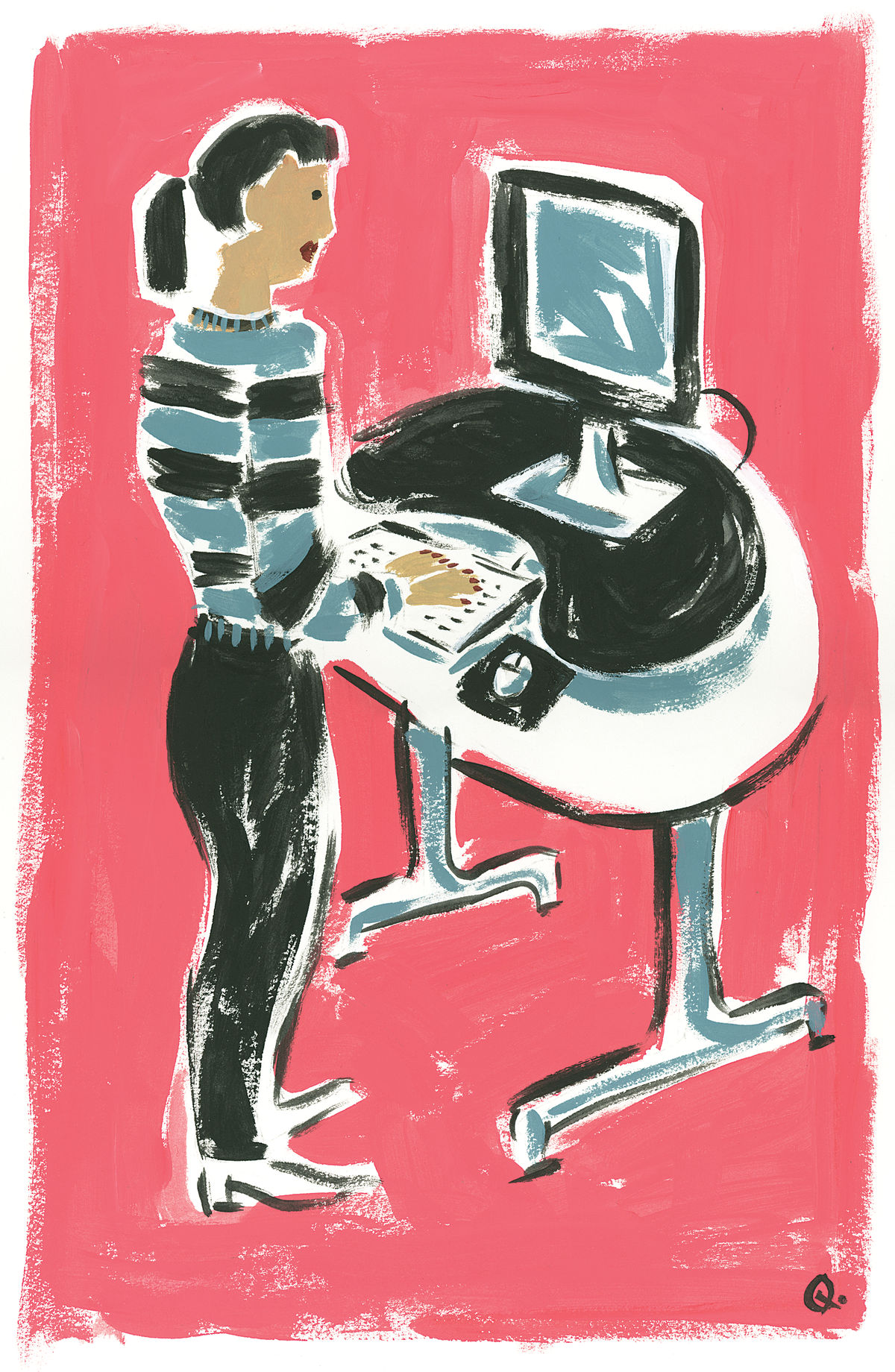Adjustable desks: Helpful or hype? It’s the movement that counts, local experts say

With medical warnings of “sitting disease,” standup desks or adjustable sit-stand stations are increasingly popular for office workers. While it gives employees more movement, research hasn’t pinpointed definitive health benefits from regular use of such stations. But researchers have called for further studies.
Meanwhile, the Mayo Clinic is among health organizations who refer to extended sitting – in front of a screen or on a couch – as unhealthy in general. “Research has linked sitting for long periods with a number of health concerns,” said an online Mayo article.
“They include obesity and a cluster of conditions – increased blood pressure, high blood sugar, excess body fat around the waist and abnormal cholesterol levels – that make up metabolic syndrome.”
A July article in “Applied Ergonomics” considered a body of research and reviewed the effects of sit-stand desks on behavior, physiological and psychological impacts, work performance, discomfort and posture. It found gains in all six but that the option had only a mild effect on health outcomes.
So what’s up, or down, as the best desk option? Spokane chiropractor Kelli Pearson said the real adjustable desk benefit for the body pivots specifically on the ability to move. You get a bit of a boost from going back and forth from seated to standing positions.
“What you want for somebody at work is the ability to change positions, to change postures,” said Pearson, co-owner of Pearson and Weary Spokane Chiropractor. She also offers workplace training through the business Real Work Life.
“It’s the ability to change postures because as you’re changing your body, you’re changing stasis on the arteries and getting blood flow to improve a bit. As you’re moving from one posture to the next, you’re not necessarily going to get stronger, though, unless it’s a treadmill desk.
“And what’s interesting in recent studies is there is a neurocognitive benefit.”
Pearson referred to a study on standing desks regarding student use. The report in the U.S. National Library of Medicine National Institutes of Health found that the standing desks improved executive function to make decisions and the ability to remember.
“Most people don’t think about that,” Person added. “Most think about standing to reduce pain, but the studies don’t show that it really decreases pain.”
She points to strains on the body in both situations, sitting or standing too long, especially if posture is poor. Standing for long periods of time can cause issues with veins and blood flow.
Other stress on the body from longtime standing can occur if the worker is wearing heels or has hip stiffness on one side and shifts more weight to the other hip, Pearson said.
“People say sitting is the new smoking because we’re sedentary,” she said. “Most of the time, the problem is in how people sit, or they’re standing so poorly. I have to say a sit-to-stand desk can be a little helpful, but if you don’t have good form, nothing is really going to make you happy.
“We’re really designed to be moving. When we’re standing, walking is much better than just standing for hours.”
People need to sit or stand with a bit of natural inward curve of the lower back, called lordosis, she said. One example is sitting all the way back in a chair with good lumbar support.
Physical therapist Kara Johnsen, with Work Right NW in Portland, is seeing a trend of more sit-to-stand desks, as well. She agrees the most important part of that change is the ability to adjust positions. Better ergonomics equates to always changing positions, she added.
“There really is not a benefit to standing for eight hours just as there isn’t for sitting eight hours,” Johnsen said. “The option to change positions is the best perk. The more often you move around, the better off you’ll be.”
She often encourages workers to take micro-breaks, as well: Stretch, roll your shoulders back, walk a bit, climb stairs or march in place. Those types of breaks get your muscles warmed up and help lubricate the joints in addition to a blood flow benefit, Pearson said.
Pearson also is encouraged by that mental boost from more movement at an adjustable desk. If the workers have requested and received that ability, they also feel listened to and cared for by a company, she said. In recent years, employers and employees seem convinced of benefits, whatever they might be.
“We have noticed a steady increase in requests for sit-stand desks. It’s been going on a couple of years anyway,” said Laurie Brown, bookkeeper and purchaser at Davis Office Furniture in Spokane.
She said the adjustable stations have become more popular than simply a standing desk. “That way if they get tired of sitting, they can stand and vice versa.”